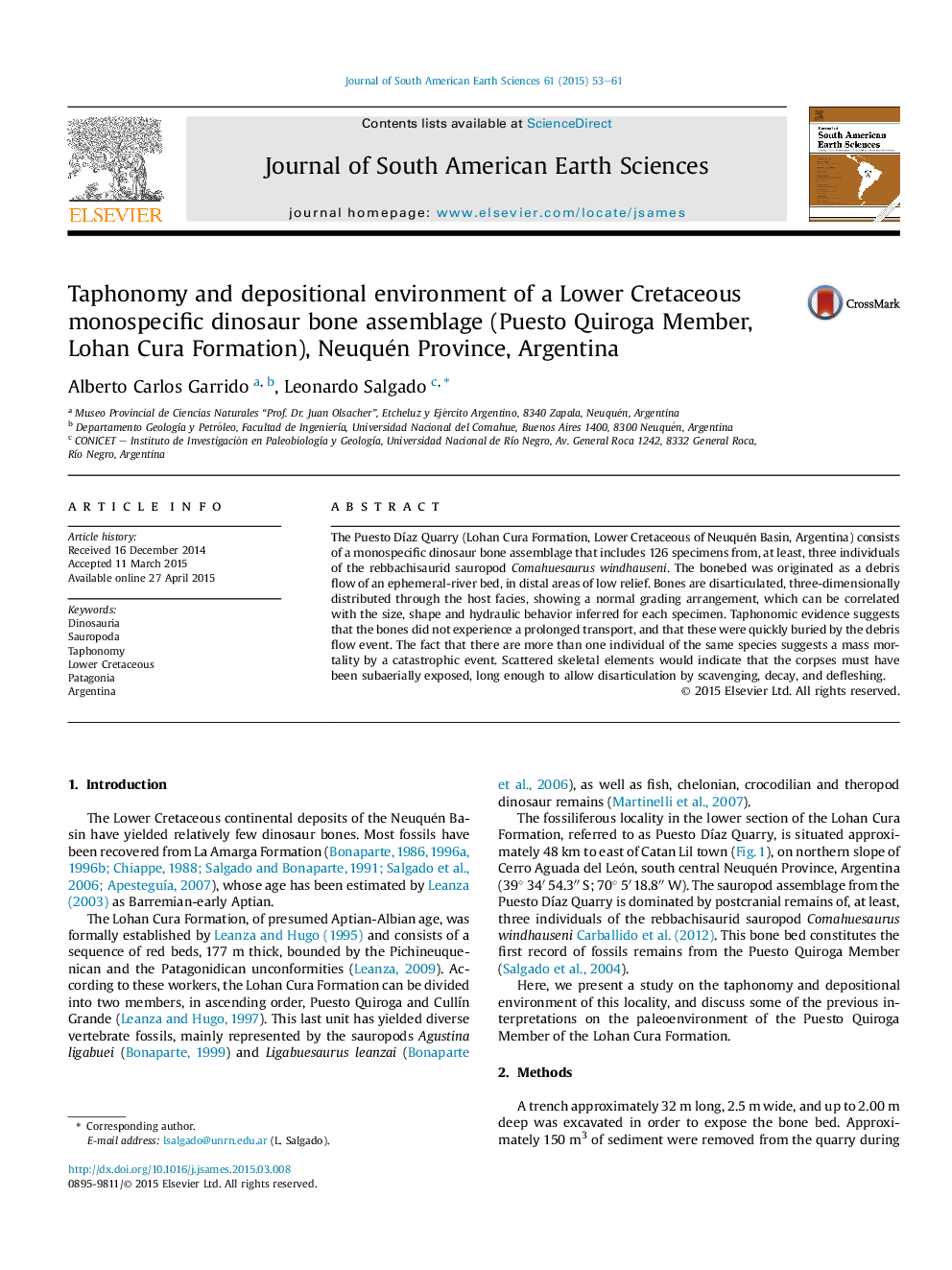| Article ID | Journal | Published Year | Pages | File Type |
|---|---|---|---|---|
| 4682216 | Journal of South American Earth Sciences | 2015 | 9 Pages |
•The paper describes the taphonomy of a bone deposit from Puesto Quiroga Member, Lohan Cura Formation, Lower Cretaceous of Neuquén Basin, Argentina.•The deposit consists of a monospecific dinosaur bone assemblage that includes, at least, three individuals of the dinosaur Comahuesaurus windhauseni.•The fact that there are more than one individual of the same species suggests a mass mortality by a catastrophic event.•Scattered bones would indicate that the corpses must have been subaerially exposed, long enough to allow disarticulation, decay, and defleshing.
The Puesto Díaz Quarry (Lohan Cura Formation, Lower Cretaceous of Neuquén Basin, Argentina) consists of a monospecific dinosaur bone assemblage that includes 126 specimens from, at least, three individuals of the rebbachisaurid sauropod Comahuesaurus windhauseni. The bonebed was originated as a debris flow of an ephemeral-river bed, in distal areas of low relief. Bones are disarticulated, three-dimensionally distributed through the host facies, showing a normal grading arrangement, which can be correlated with the size, shape and hydraulic behavior inferred for each specimen. Taphonomic evidence suggests that the bones did not experience a prolonged transport, and that these were quickly buried by the debris flow event. The fact that there are more than one individual of the same species suggests a mass mortality by a catastrophic event. Scattered skeletal elements would indicate that the corpses must have been subaerially exposed, long enough to allow disarticulation by scavenging, decay, and defleshing.
